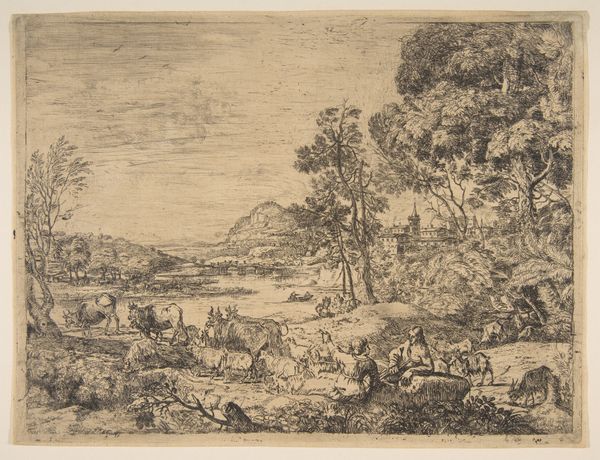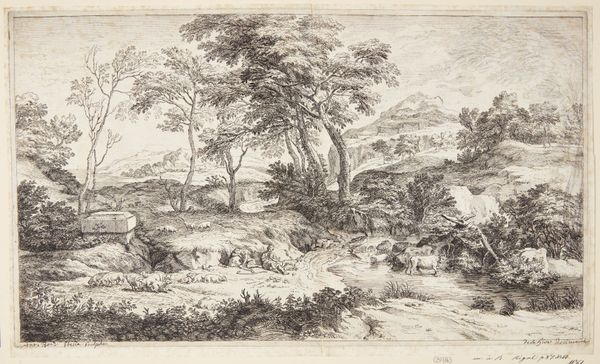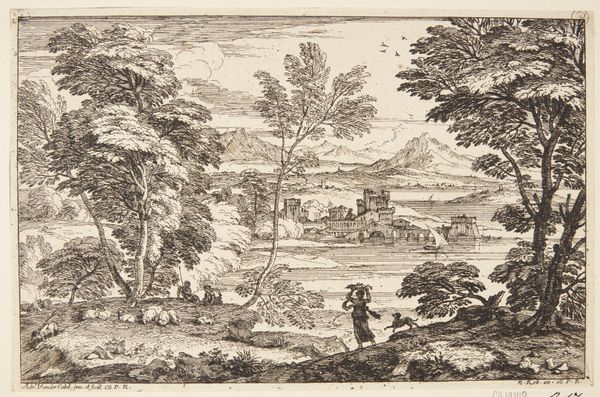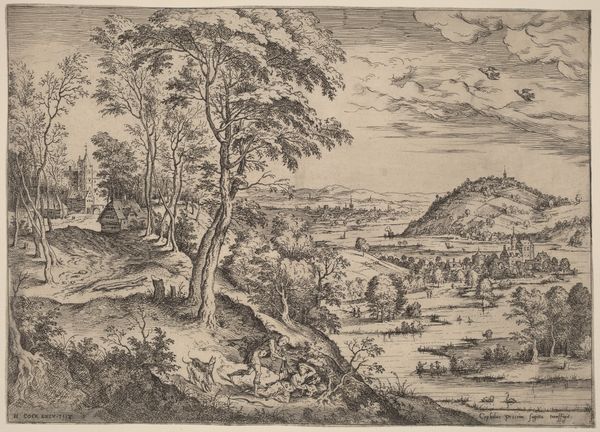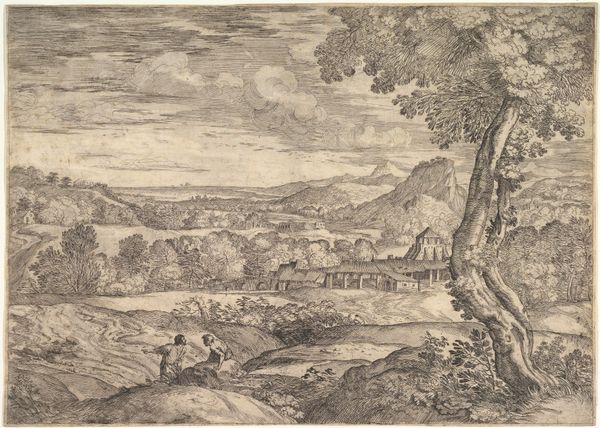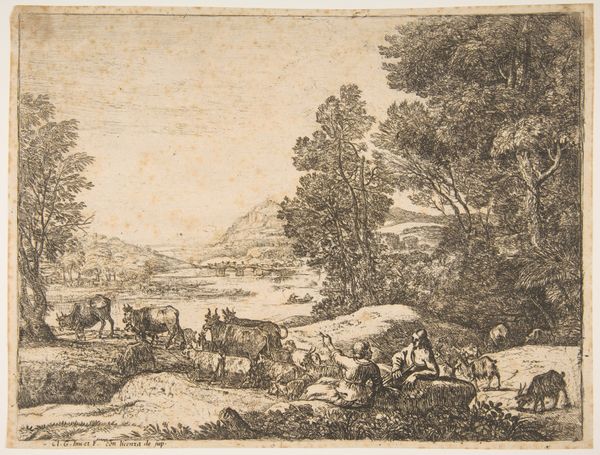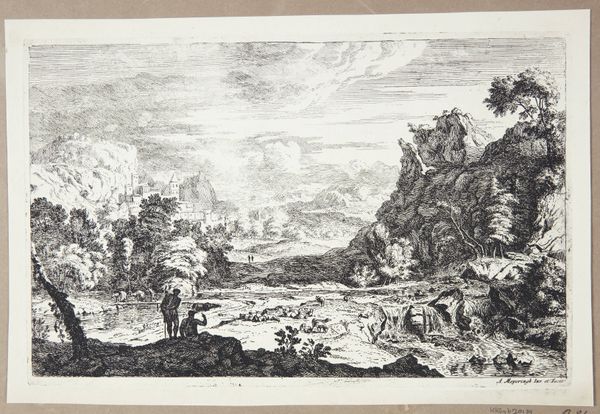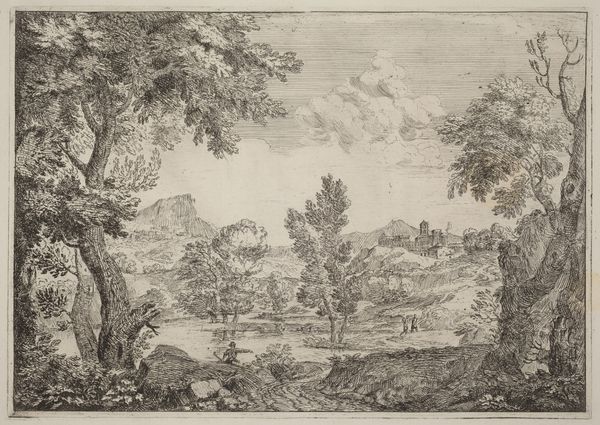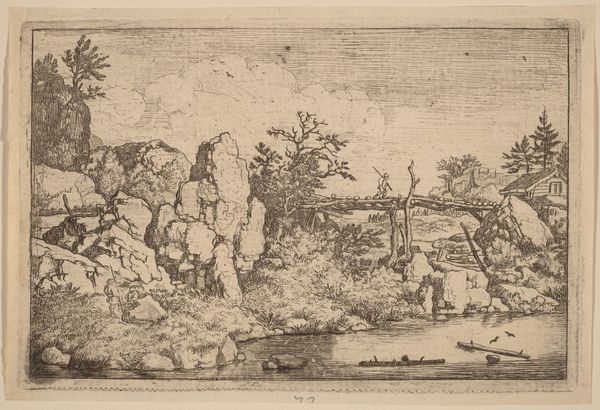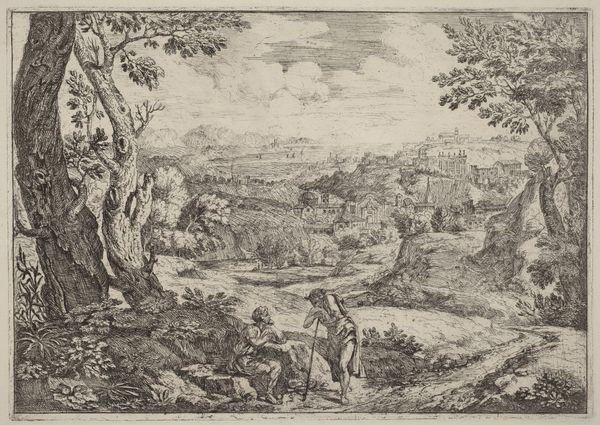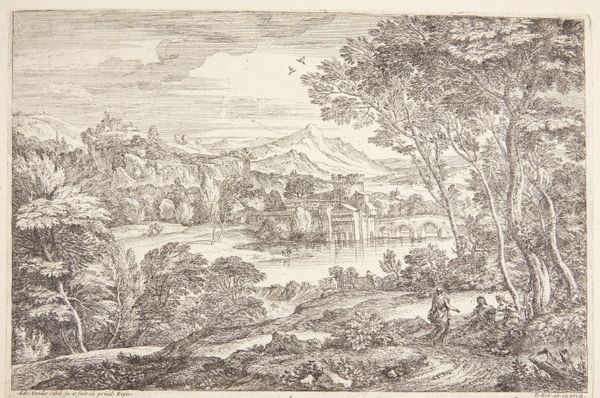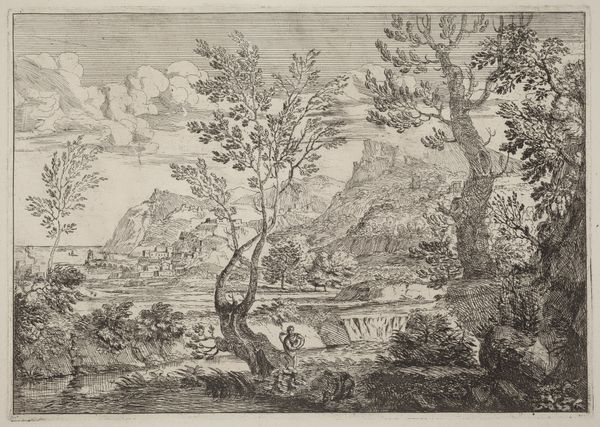
Shepherd and Shepherdess Conversing in a Landscape 1646 - 1656
0:00
0:00
drawing, print, etching
#
drawing
#
baroque
# print
#
etching
#
landscape
Dimensions: sheet: 7 11/16 x 10 1/4 in. (19.6 x 26 cm)
Copyright: Public Domain
Curator: Before us, we have "Shepherd and Shepherdess Conversing in a Landscape" by Claude Lorrain, created sometime between 1646 and 1656. It’s an etching, currently residing at The Metropolitan Museum of Art. What’s your first impression? Editor: Bleak. In an oddly pastoral, elegant sort of way. Look at the thin lines; the composition feels open, yet the pervasive use of monochromatic ink, especially within the human figures and the surrounding flocks, renders everything solemn. Curator: Interesting. I'm immediately drawn to the etcher's labor here, thinking of the biting, scratching, and submerging in acid necessary for such tonal variation. Look at the subtle differences in the etched lines representing light filtering through foliage versus those that depict the movement of livestock. Each contributes significantly to the visual texture. Editor: That attention to the process certainly comes through. The goats, cows, and sheep surrounding the conversing figures contribute so much to this piece, creating an ancient atmosphere reminiscent of Virgil's "Eclogues." The humble herders almost disappear amid such timeless symbology of livestock representing prosperity and natural harmony. Curator: Harmony… I see a strategic interplay of artisanal labor and market value, both inherent to etching's reproducible nature. Considering paper quality and ink pigments available in 17th-century Europe, there's an economical beauty in the efficiency and durability, almost as though it seeks to underscore how artistic vision mediates tangible material. Editor: Perhaps… although I tend to believe there is an intentional, evocative link between this material execution and the scene it illustrates. Those small rustic human figures seem dwarfed, enveloped within all these archetypal symbols. It gives the whole print such an elegiac tone. Curator: You find this melancholy symbolism powerful here, yet I remain transfixed by how Claude makes available, and renders visible through etching, the economic and social networks facilitating access to and appreciation of visual art at his time. It’s less about isolated reflection, I think, and more an integral aspect to early modern visual culture’s unfolding dialectic. Editor: Fair enough; seeing this through its cultural economy clarifies some aspects of Lorrain’s work while I discern recurring symbolic elements connecting nature, labor, and the fleeting presence of human existence here, now brought together by skilled handiwork and distributed media of their moment. Curator: An intersection of lasting materials and transient stories. A suitable, balanced summation indeed.
Comments
No comments
Be the first to comment and join the conversation on the ultimate creative platform.
